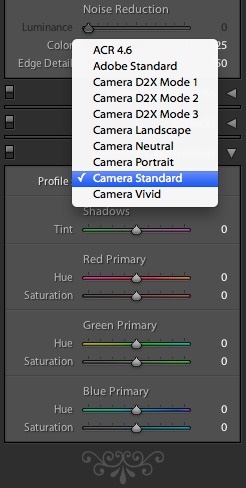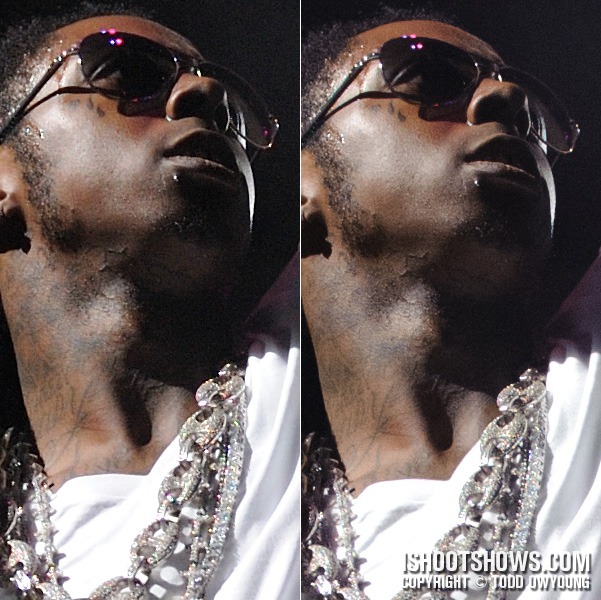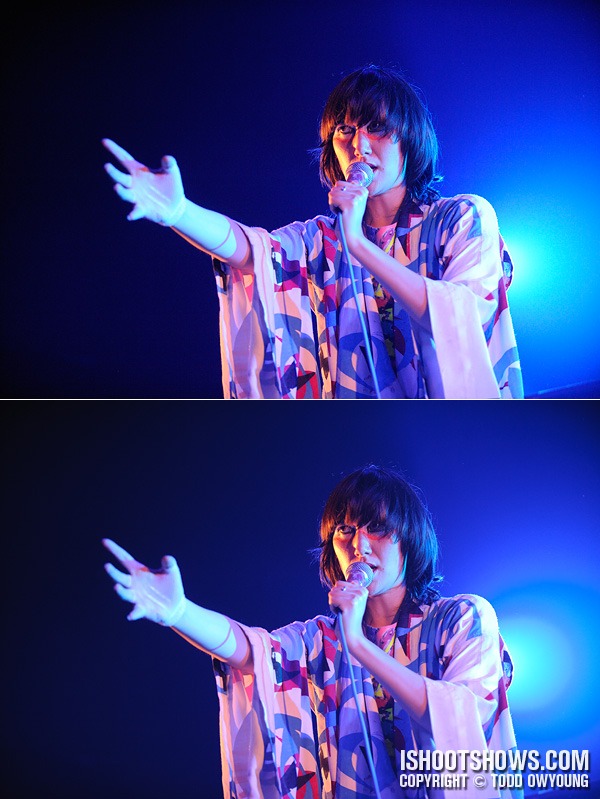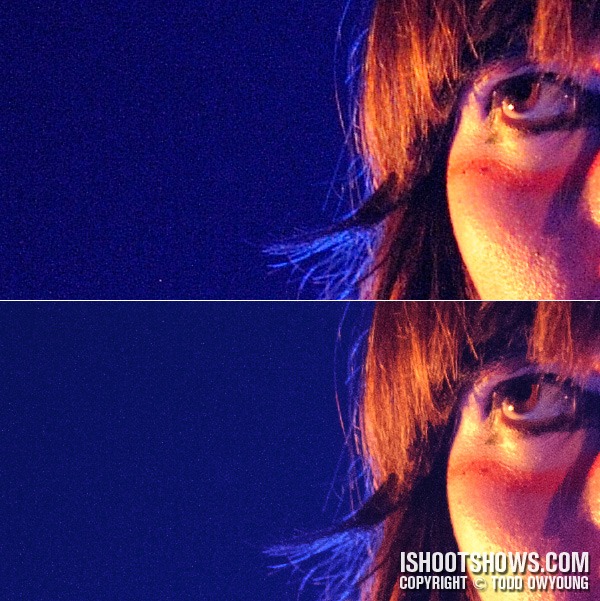
I've been a Nikon Capture NX user for years. Which means that I've suffered for years. But not out of any sense of masochism, but rather in the pursuit of the highest quality in converting my RAW files.
As any casual user of Nikon software will swear (believe me, we all swear when using Capture NX), it's not for the joy of the experience. And while the current NX2 might offer excellent image quality, I'm always on the search for something better that offers a more complete workflow. Enter Lightroom 3.
Even as a beta release, Lightroom 3 is impressive. While previous versions of Lightroom have offered a very appealing workflow, with the ability to catalog, edit, and process digital images fluidly in a single application, the image quality has long left something to be desired when working with Nikon NEFs. This deficit in image quality was something especially true when working with high ISO images – a fact of life for music photographers, wedding photographers, and anyone else shooting in dim and uncontrollable light.
Despite slow performance, memory leaks, and a maddening user interface, Nikon Capture NX and NX 2 have long provided the image quality standard to which I hold other RAW converters. While there are other converters like the excellent Raw Photo Processor that offer superlative detail, Capture's balance of pleasing color and overall image quality kept me coming back.
With Lightroom 3 beta, I think that Capture NX2 finally has a real contender that matches Capture's image quality in many ways, exceeds it in some, and offers the great user interface and workflow that photographers have come to expect from Adobe Labs.
Let's take a look at how Lightroom 3 beta stacks up to Nikon Capture NX 2 at my specialty: high ISO live music photography.
Example 1: Steven Tyler, Aerosmith
Nikon D3 at ISO 800. Left: Capture NX 2; Right: Lightroom 3 – Can you spot the differences?
With Nikon Capture NX 2, I get brilliant color from my RAW files. The saturation, contrast, and gradations of the files, as rendered by Capture, have always made for accurate and pleasing images with zero work.
While previous versions of Lightroom and Adobe Camera Raw allowed users to tweak and calibrate default settings, the results never stacked up to the effortless results of Nikon Capture – that is, until now.
The elves at Adobe Labs seem to have been working overtime, because the new camera profiles are excellent. Simply switching from “Adobe Standard” to “Camera Standard” applies a custom color profile to my Nikon D3 and Nikon D700 files that is very, very close to the proprietary profiles from Nikon. All samples shown here were converted using these camera standard profiles, and the results should be considered specific to them.
For all effective purposes, I'm getting all the goodness I loved about Nikon Capture's conversions with none of the headache.
However, in comparing the new Lightroom 3 beta with Nikon Capture NX 2, Adobe's latest release isn't without flaws.
Blown Channels/Saturation
In live music photography, capturing lights in the frame is not only inevitable, it's often desirable. With their singular saturation, these gelled incandescent PAR lights or LEDs are a surefire way to blow a color channel with a digital sensor.
Let's look at how Capture NX 2 and Lightroom 3 handle this common effect in live music.
Nikon D3 at ISO 800. Left: Capture NX 2; Right: Lightroom 3
While the RAW conversion of both images is very close (as seen in the full frame of Aerosmith's Steven Tyler), this detail of defocused lights shows the subtle difference between the two in the rendition of mono-color light sources.
More on this difference in super-saturation later. Let's look at another example.
Example 2: Lil Wayne
Nikon D3 at ISO 1600. Left: Capture NX 2; Right: Lightroom 3
Again, this comparison shows a very close rendition between Capture NX 2 and Lightroom 3 beta. Skintones look very similar, while the starkest difference in the overall image is increased saturation in the smoke behind Lil Wayne. Even then, the overall rendition is extremely close.
Let's take a look at how the two conversion engines handle detail.
Lightroom 3 vs Nikon Capture NX 2 at ISO 1600
Nikon D3 at ISO 1600. Left: Capture NX 2; Right: Lightroom 3
There isn't too much to choose from between these two 100% crop examples, but there are some subtle differences.
To my eye, the Lightroom 3 file has a very slightly finer look in comparison to NX 2, while Nikon's profile with NX 2 has a slightly deeper contrast. Both Capture NX 2 and Lightroom 3 are set to default sharpening.
Noise Characteristics
Nikon D3 at ISO 1600. Left: Capture NX 2; Right: Lightroom 3
This is a 100% crop from the image of Lil Wayne does a good job at showing the subtle differences in the rendering of noise between the two RAW conversion engines.
To my eye, Capture NX 2 renders a coarser, “fuzzier” noise profile than Lightroom 3, which renders a finer interpretation. For image quality, my preference is for the latter, which will enlarge more cleanly for larger prints.
Example 3: Karen O., Yeah Yeah Yeahs
Nikon D3 at ISO 4000. Top: Capture NX 2; Bottom: Lightroom 3
In this third example, the conversion from RAW to JPG is quite close between Lightroom 3 and Nikon Capture NX 2, but again with subtle and important differences.
Lightroom 3 vs Nikon Capture NX 2 at ISO 4000
Nikon D3 at ISO 4000. Top: Capture NX 2; Bottom: Lightroom 3
At ISO 4000, things get a little more interesting. As with all the previous examples, these two 100% crops show the image with no luminance noise reduction.
I always prefer to shoot without noise reduction in-camera, as I feel that image quality is best when NR is performed in RAW conversion or in post-processing.
As you can see from this example crop, the Capture NX 2 crop is much more gritty in appearance, while Lightroom 3 renders a much finer noise pattern. At ISO 4000 from the Nikon D3, the difference in the fineness of noise is even more apparent than at lower ISOs, with Lightroom 3 doing an excellent job.
Lightroom 3 vs Nikon Capture NX 2: Gradations at high ISO
Nikon D3 at ISO 4000. Top: Capture NX 2; Bottom: Lightroom 3
Continuing on the thread of channel saturation, we again see from this sample that Lightroom seems to have issues rendering a smooth gradation as color channels approach saturation. While overall digital noise is kept to a minimum with Lightroom 3 beta, in this example Nikon Capture comes out ahead for pleasing rendition of gradations, not only in this 100% crop, but as readily seen in the resized version above.
Lightroom's treatment of gradations near the point of clipping is easily the converters biggest flaw at this point due. With haze and stage haze in regular use at most shows, these types of gradients are not only common, but a fact of life for the music photographer. The artifacts displayed by Lightroom are a big step back in this regard, but one they should be able to easily fix by updating the camera profiles.
We're getting about 95% of the goodness Capture gives us, but this is a big 5% to miss.
End Notes:
Clearly, Adobe Lightroom has come a very long way from its earlier versions in the third major release, even in its beta phase. Compared to Nikon Capture NX 2, which has been my RAW converter of choice since its release, Lightroom 3 offers some very real, if subtle, advantages in its conversion engine.
When considering the greatly enhanced workflow and user-friendly interface, Lightroom 3 should be in serious consideration by any digital photographer as a nearly one-stop shop for cataloging and RAW conversion.
Though Nikon Capture NX 2 still has some advantages in overall image quality, I'll be will be keenly awaiting the full release of Lightroom 3 if they can continue to improve the RAW engine and camera profiles.










